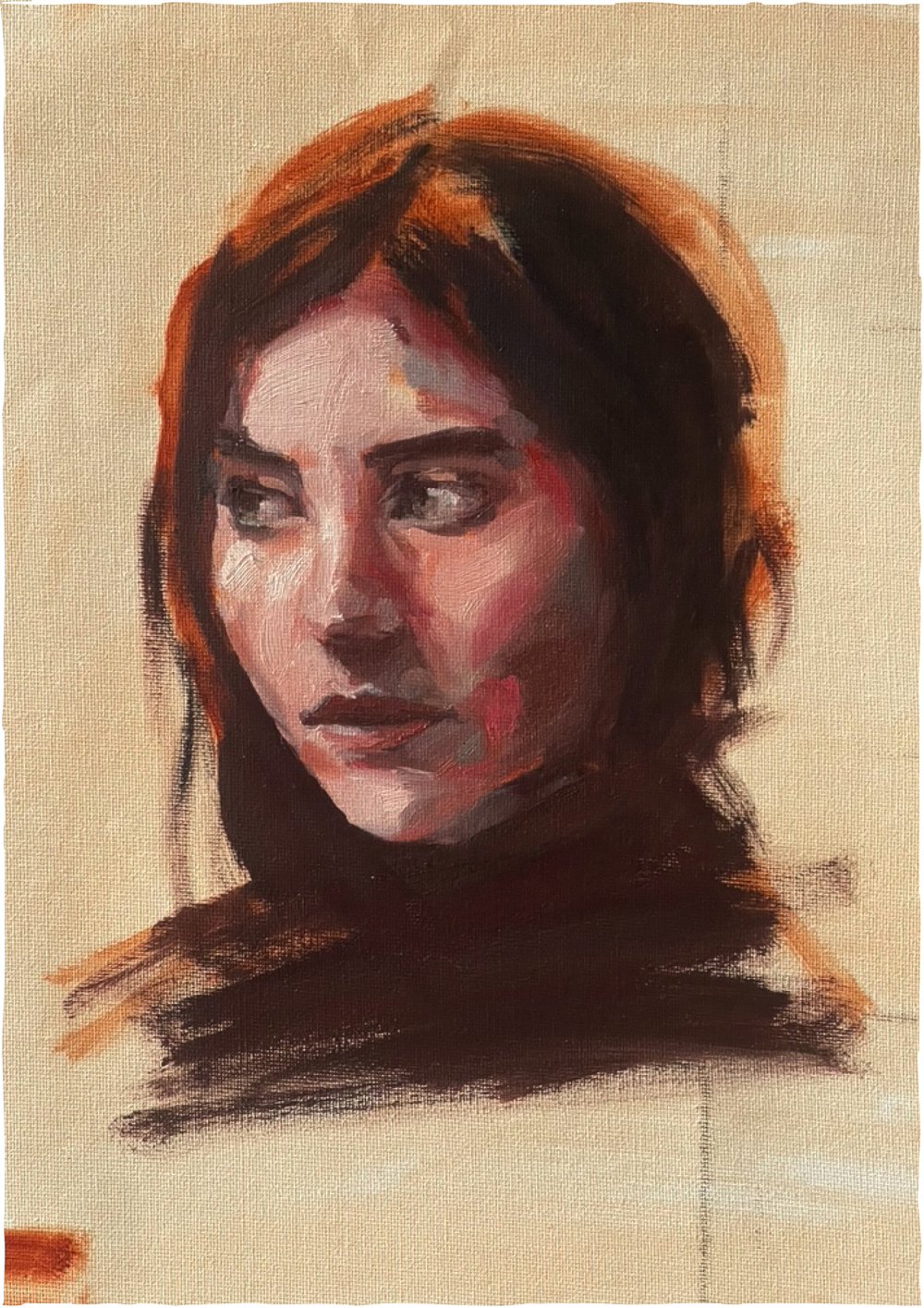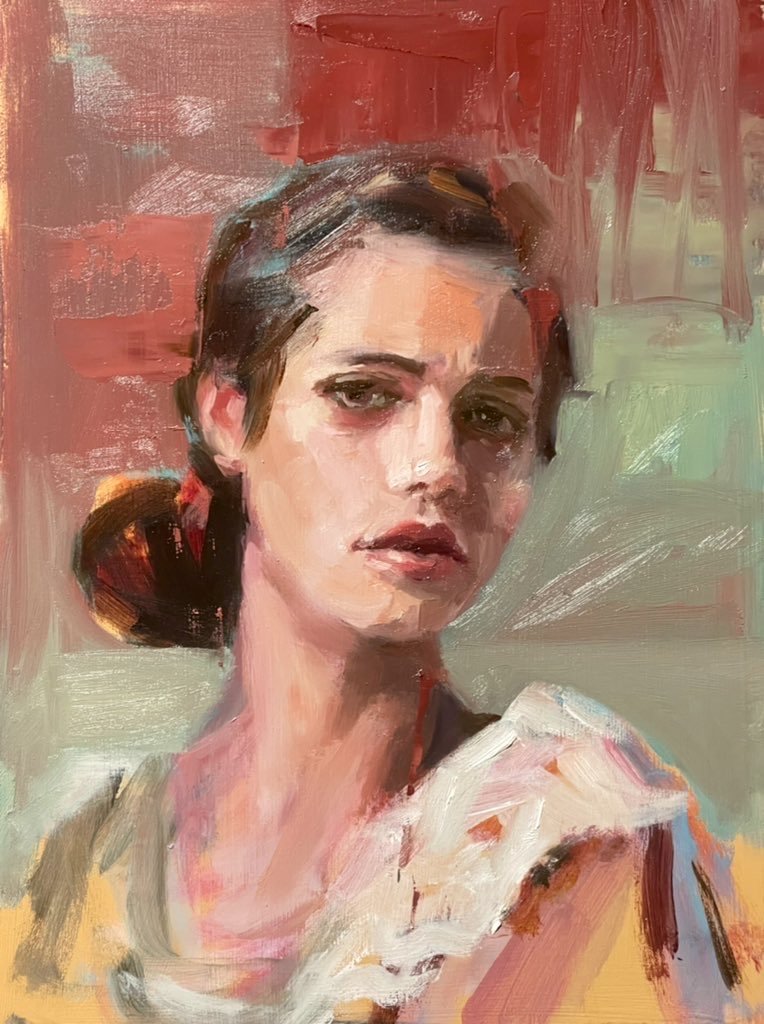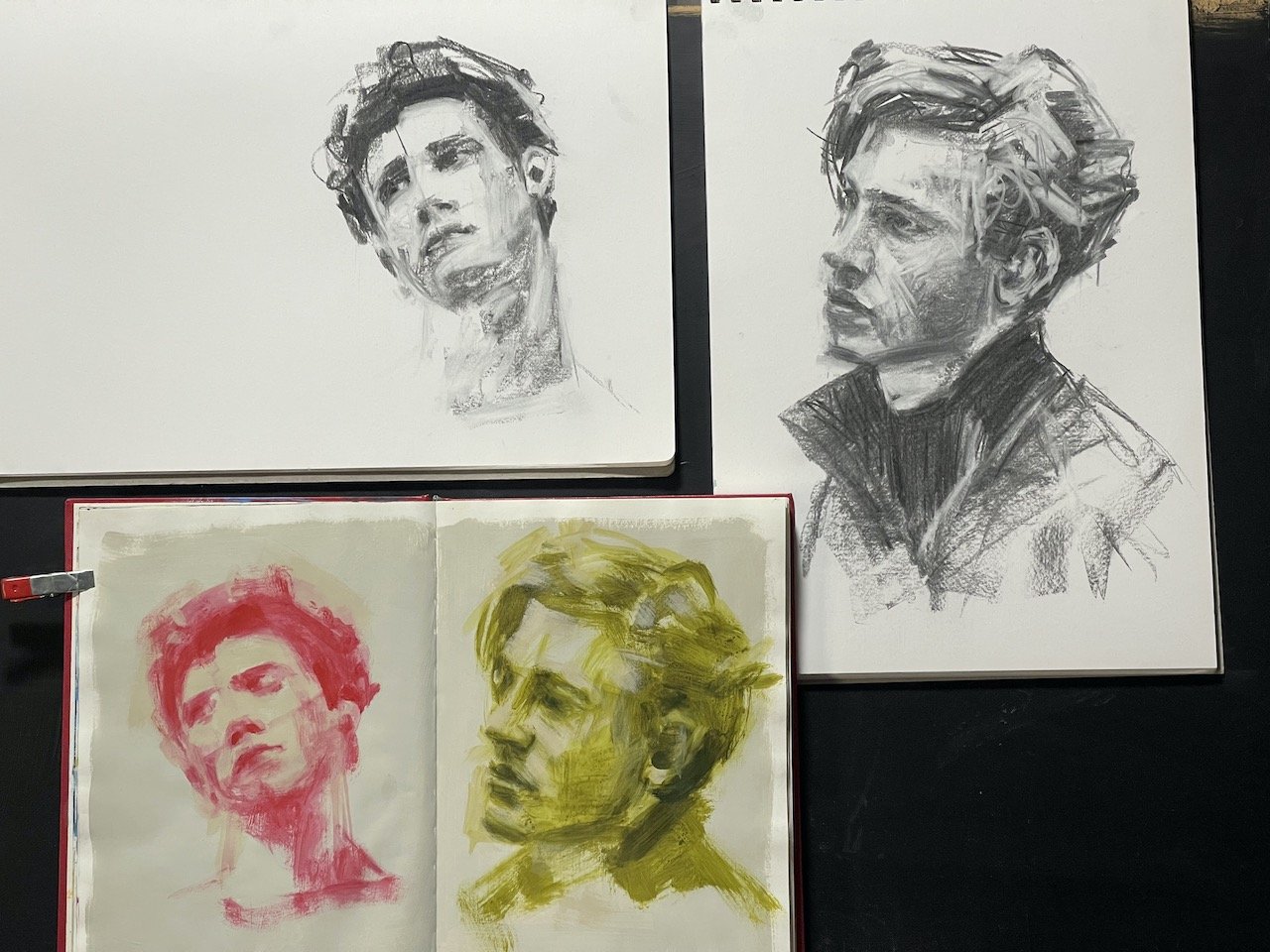…is a colour I’ve had in my oil kit from the very beginning, but it’s not a colour that I’ve used much and it’s certainly not a colour that I would normally add to my skin tone pallet…however, I’ve noticed that other artists that I admire do include Viridian green into their complex skin pallets (by complex I mean more than 4 colours + white), and so I think it’s about time that I tried it for myself.
so…
I set out the complex pallet that I said I would try in a previous blog and painted an alla prima portrait right off the bat. I was pleasantly surprised at the addition of viridian green, and I’m itching to use it again.
colours used for this oil painting study are, Viridian green, Ultramarine blue, Cerulean blue, transparent red oxide, Cad red, Cad red deep, Alizarin crimson, yellow ochre, titanium white and ivory black.
note: if you want to watch the process on youtube see here
The trick to using Viridian green in skin tones is to mix it with the reds to get skin colours, so instead of adding blue or black and yellow, you use the green as the main mixing colour into the reds, and then tweak it with the other colours, not the other way around. It’s just works so nicely, like it’s the perfect mix of blue and yellow for this job I think.
I put out so much paint…
…on my pallet there’s enough left to do another portrait, so I’m going to try something else that I’m not really comfortable doing - finishing a portrait that I started in acrylics with oils, and I’m going to use this complex pallet.
I painted this acrylic study…
…earlier this year. I used a limited pallet, 3 colours + white and left it looking unfinished.
It has now been transformed with the oils, and although the process was frustrating (like I prefer to start in oils if I’m going to use them), I’m happy with the results (see below).
oil study over acrylic underpainting using the complex pallet with viridian green.
I have one more idea to try before I close this blog…a limited pallet using viridian green, red and white. I’m dubious that I’ll pull this off without adding yellow ochre to my pallet but we will see…
with the addition of yellow ochre, viridian green and red + white make a workable skin pallet.
well…after these studies I am moving viridian green from the pile of paint that I don’t bother with to my pile of necessary colours and favourites.
Fancy that!






















